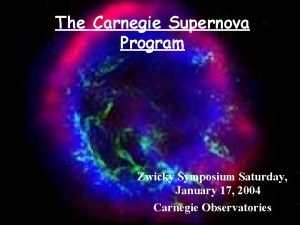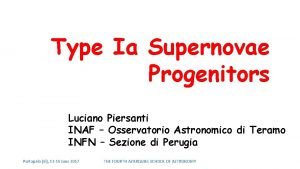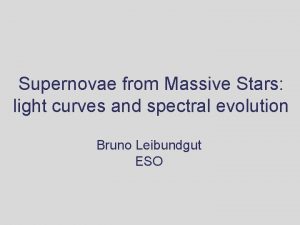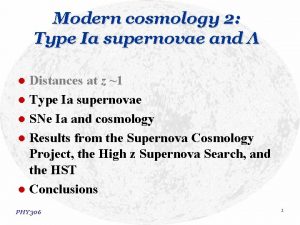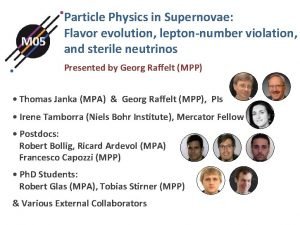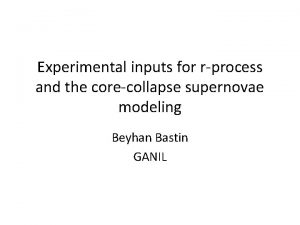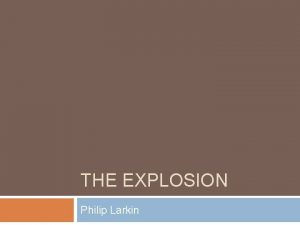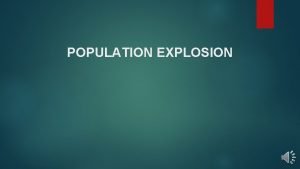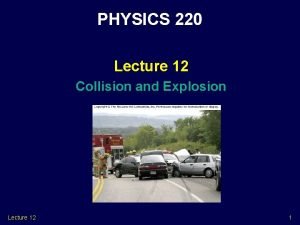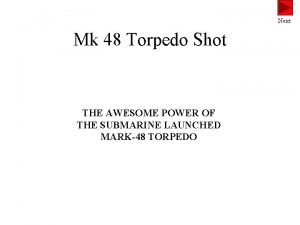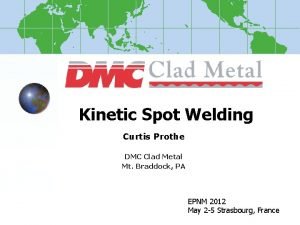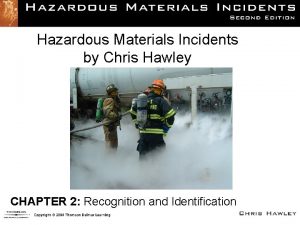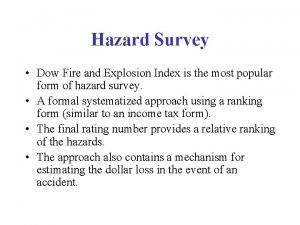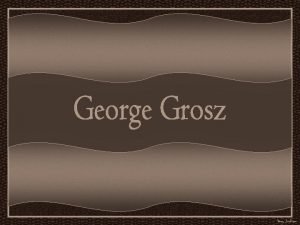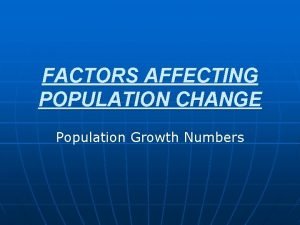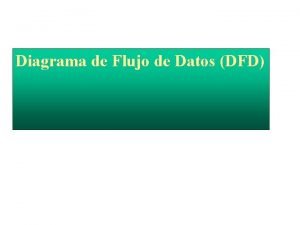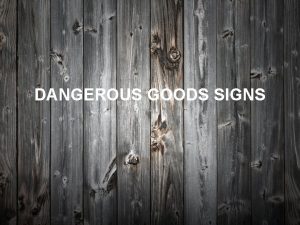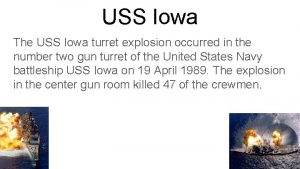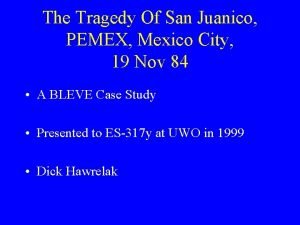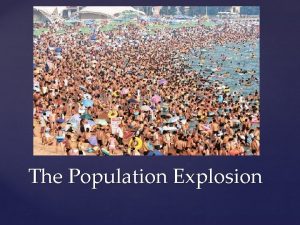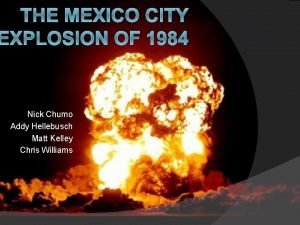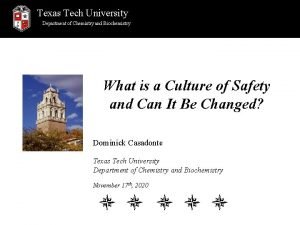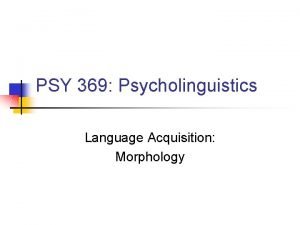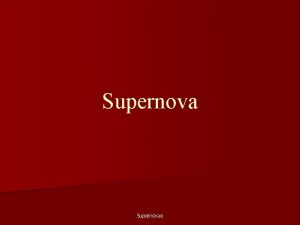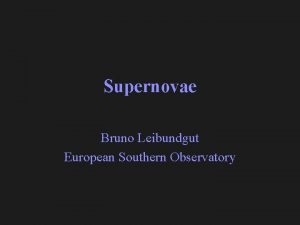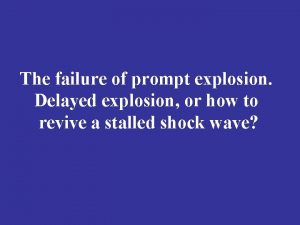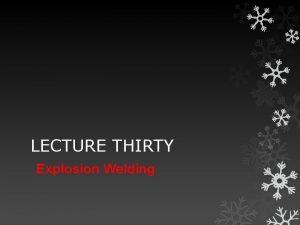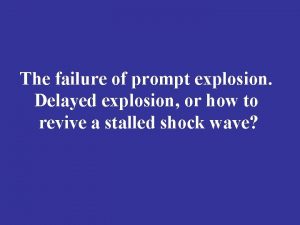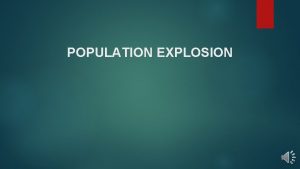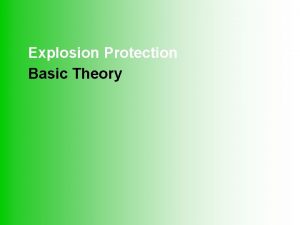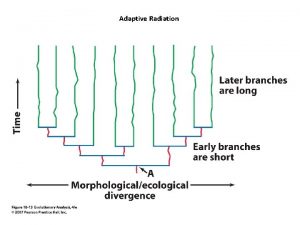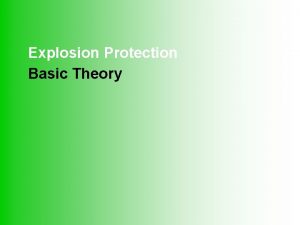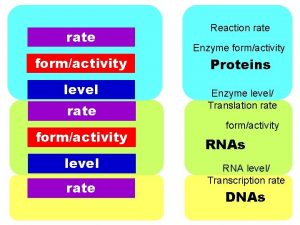EXPLOSION RATE OF TYPE IA SUPERNOVAE AS FUNCTION




















![Rate and model Rate = star formation rate (SFR) (Hopkins et Beacom 2006]) ∗ Rate and model Rate = star formation rate (SFR) (Hopkins et Beacom 2006]) ∗](https://slidetodoc.com/presentation_image/646e0b8c6f5c534dfeea11ad2d97870c/image-21.jpg)






- Slides: 27

EXPLOSION RATE OF TYPE IA SUPERNOVAE AS FUNCTION OF REDSHIFT FROM SUPERNOVA LEGACY SURVEY Tuesday lone supernovae presentation Moriond 2008 – La Thuile - Italy Pascal Ripoche – LPNHE - Paris Moriond 2008 - Pascal Ripoche 1

Outline The SNLS Measuring Rate in the SNLS Photometric selection of type Ia supernovae Type Ia Detection/Identification efficiency The rate measurement Moriond 2008 - Pascal Ripoche 2

Super. Nova Legacy Survey Moriond 2008 - Pascal Ripoche 3

The Super. Nova Legacy Survey Main goal : measurement of cosmological parameters using type Ia supernovae. Method : 5 years on 4 one square degree fields at CFHT (megacam + 4 filters) Spectroscopic follow-up (VLT, Keck, Gemini) Results : about 300 type Ia supernovae up to z = 1. 0 with spectroscopic identification during the 3 first years. Opportunity to accurately measure SN Ia rate vs z Moriond 2008 - Pascal Ripoche 4

Real time detection Pipeline • • 4 fields observed every 3 -4 days in 4 bands (“rolling search”) Variable object detection method : PSF matched image subtraction new sub detection ref Increasing Sn Ia color Off-centered Good weather Spec time available spectroscopy Day Spectroscopy: z = 0. 81 Type : Sn Ia Moriond 2008 - Pascal Ripoche 5

Measurement of the Rate Moriond 2008 - Pascal Ripoche 6

How to measure supernovae explosion rate in the SNLS ? A simple division : Observed type Ia supernovae sample Detection/Identification efficiency but Real Time spectroscopic identification efficiency is almost impossible to model due to spectroscopic selection (human selection, weather, available time, host luminosity, …). pure photometric detection/identification Moriond 2008 - Pascal Ripoche 7

Variable object detection Dataset : 2. 5 years of SNLS images reprocessed First level selection : Variables objects ◦ Images subtraction ◦ Each detection is scored with a neural network and shapelet to remove artifacts ◦ At least 5 good detections with S/N greater than 5. Spurious subtraction residuals ◦ Cut on field area and date to avoid edge effects. Selected objects are mostly physical objects : AGNs, variable stars, supernovae (all types). Moriond 2008 - Pascal Ripoche 8

Selected objects 3051 variable objects Host galaxy photometric redshift : Ilbert et al. 2006 289 objects with spectroscopic data from real-time operations: redshift and type (not always) Used as control sample Redshift accuracy : 0. 001 Sn. Ia Sn? Sn. II Sn. I b/c AGN 196 53 24 7 9 Moriond 2008 - Pascal Ripoche 9

SN Ia photometric selection Level II Selection : Type Ia supernovae Cut I : multi-color Lightcurve fit (SALT 2) ◦ Redshift fixed (spectroscopic or photometric) ◦ Fitted parameters : stretch, color and brightness ◦ Χ 2 selection Cut II : loose cut on brightness ◦ gets rid of catastrophic redshift ◦ minimize contamination Moriond 2008 - Pascal Ripoche 10

Test on control sample The control sample is used to test cuts (with host photometric redshift) • Blue : cut with chi 2 • Red : cut on brightness • Selected objects Moriond 2008 - Pascal Ripoche 11

Results : Snia sample 435/3051 selected objects SNIa spec SN no spec No contamination with spectroscopic redshift 2% Contamination with photometric redshift Photometric redshift accuracy improved Spec type Detected Selected Sn Ia 196 182 Sn 53 32 Sn II 24 0 Sn Ib/c 7 0 AGN/Var 9 0 No Spec 2762 221 Moriond 2008 - Pascal Ripoche 12

Detection and selection efficiency Moriond 2008 - Pascal Ripoche 13

On image SN Ia simulation Main parameters: ◦ ◦ ◦ ◦ Ra/Dec: coordinates z : Redshift (from photo. Z catalogue) D 0: Date of maximum s : Stretch c : Color (extinction) disp : intrinsic dispersion (α, β, Rv, …) Filter g’ Lightcurves simulated with SALT 2 Filter r’ Filter i’ Filter z’ Simulated supernovae added on all images (before subtraction) Simulated images processed with the photometric detection pipeline Moriond 2008 - Pascal Ripoche 14

Detection/Selection Efficency 2. 5 years of data processed (15 To) 720000 simulated supernovae MC distributions tuned to match observed distributions: • Color • Stretch • Intrinsic dispersion • S/N • position on host I’ mag vega Moriond 2008 - Pascal Ripoche 15

SN Ia Rate measurement Moriond 2008 - Pascal Ripoche 16

Rate calculation Time dilatation correction Comoving volume Moriond 2008 - Pascal Ripoche 17

Corrections and Systematic Errors Corrections Photometric Redshift dispersion Photometric Redshift inefficiency Contamination Systematic uncertainties Efficiency calculation : distribution (stretch/dispersion/color) Photometric Redshift dispersion Contamination Moriond 2008 - Pascal Ripoche 18

Type Ia SN rate Photometric selection Spectroscopic selection Rest frame Rate (z) assumed cosmology : LCDM (0. 3, 0. 7) Moriond 2008 - Pascal Ripoche 19

Comparison with previous measurements Selection method Spectro mixed Photo Réf Nb Spec Ia Hardin et al. 4 100% Pain et al. 38 97% Blanc et al. 16 100% Barris & Tonry 98 23% Niell et al. 77 75% Dilday et al. 17 94% Kuznetsova et al. 57% Dahlen et al. 56 59% This study 435 42% Moriond 2008 - Pascal Ripoche 20
![Rate and model Rate star formation rate SFR Hopkins et Beacom 2006 Rate and model Rate = star formation rate (SFR) (Hopkins et Beacom 2006]) ∗](https://slidetodoc.com/presentation_image/646e0b8c6f5c534dfeea11ad2d97870c/image-21.jpg)
Rate and model Rate = star formation rate (SFR) (Hopkins et Beacom 2006]) ∗ delay time function Φ(t) σ/τ=0. 2 τ=3. 7± 0. 25 Gyr χ2=3. 75 Slope measurement α=2. 14± 0. 51 10 -5 Sn/Mpc 3/yr R 0=2. 0± 0. 54 χ2=4. 77 Moriond 2008 - Pascal Ripoche 21

Conclusion We have derived a photometric SN Ia rate vs z up to redshift 1. 2 Tested against a spectroscopic sample (40%) Rate increase with redshift. Possible flattening around z = 1 Good agreement with previously measured low and higher z rate (except with Barris and Tonry 2003) Moriond 2008 - Pascal Ripoche 22

The End Moriond 2008 - Pascal Ripoche 23

Taux spectroscopique (1) Nouvelles coupures : sélection spectroscopique SNIa spec SN no spec Moriond 2008 - Pascal Ripoche 24

Taux spectroscopique (2) On suppose que l’absence de spectroscopie est aléatoire (temps disponible, méteo) on estime l’efficacité spectroscopique : 69% ± 10% On n’utilise que les supernovae Ia identifiées • Pas d’erreur sur les redshifts • Pas de contamination • Nouvelle systématique d’efficacité spectro Pas de spectroscopie pour z >1 Moriond 2008 - Pascal Ripoche 25

Moriond 2008 - Pascal Ripoche 26

(Z >1) Moriond Pascal- Marseille Ripoche 18 octobre 2008 2007 - CPPM 27
 Type ia supernovae
Type ia supernovae Supernovae
Supernovae Supernovae
Supernovae Supernovae
Supernovae Supernovae
Supernovae Supernovae
Supernovae Philip larkin the explosion
Philip larkin the explosion Indian burial grounds candy
Indian burial grounds candy Evangelism explosion outline
Evangelism explosion outline The concept of population
The concept of population A freight train is being assembled in a switching yard
A freight train is being assembled in a switching yard Mark 48 torpedo explosion
Mark 48 torpedo explosion Tug of war visible thinking
Tug of war visible thinking Dmc explosion welding
Dmc explosion welding Mass explosion hazard placard
Mass explosion hazard placard Explosion index
Explosion index Georg grosz explosion
Georg grosz explosion Factors affecting population explosion
Factors affecting population explosion Four spiritual laws evangelism method
Four spiritual laws evangelism method Diagrama de flujo dfd
Diagrama de flujo dfd Tdg class 1 signs
Tdg class 1 signs Kendall truitt
Kendall truitt San juanico disaster case study
San juanico disaster case study Population explosion
Population explosion Mexico city explosion 1984
Mexico city explosion 1984 Ttu chemistry department
Ttu chemistry department Conceivable in a sentence
Conceivable in a sentence Overpopulation psa
Overpopulation psa
